How Abstract Art Brings Soul Into Zen Minimalism
Minimalism has been marketed as clean lines, white walls, and furniture so sharp you could cut yourself on the edges. Zen has been diluted into bamboo decals, overpriced incense, and spa playlists on repeat. Put together, most people imagine a cold, sterile showroom, a space that photographs well but doesn’t actually hold them.
That isn’t what a Zen room is meant to be.
Zen is presence. Minimalism is clarity. Together, they can form an environment that not only looks intentional but actually feels healing. And the bridge between those two worlds, the one thing that takes a minimalist Zen room from sterile to soulful, is abstract art.
Abstract art is present on canvas. It doesn’t tell you what to think. It doesn’t crowd you with literal meaning. It invites you into stillness, while holding a subtle energy that keeps the room alive. It’s what stops a minimalist room from becoming empty and transforms it into sa anctuary.
This isn’t about trends or Pinterest boards. This is about building a space that carries you through exhaustion, chaos, and noise, and gives you something quieter, deeper, more sustaining. Let’s walk through how that actually works.
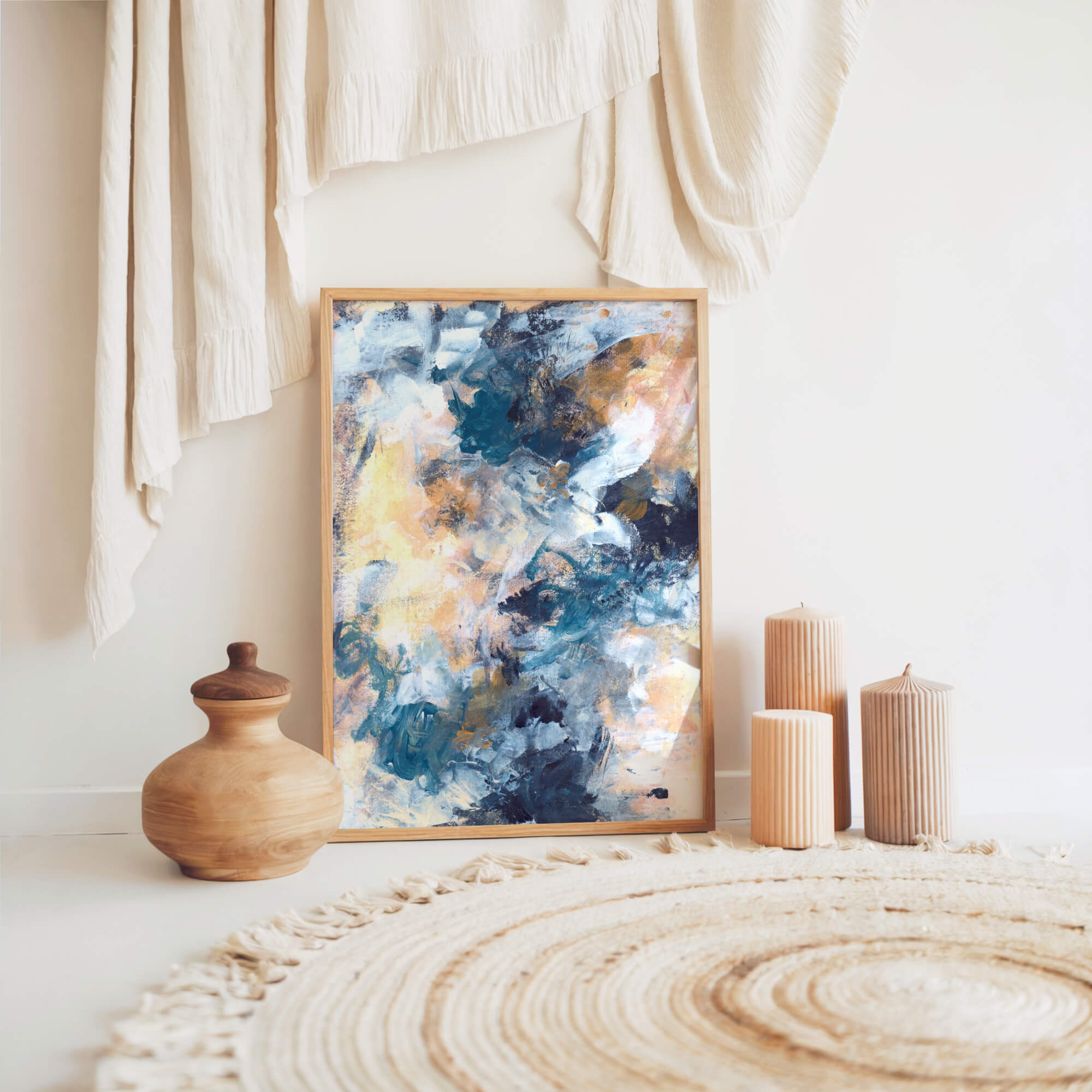
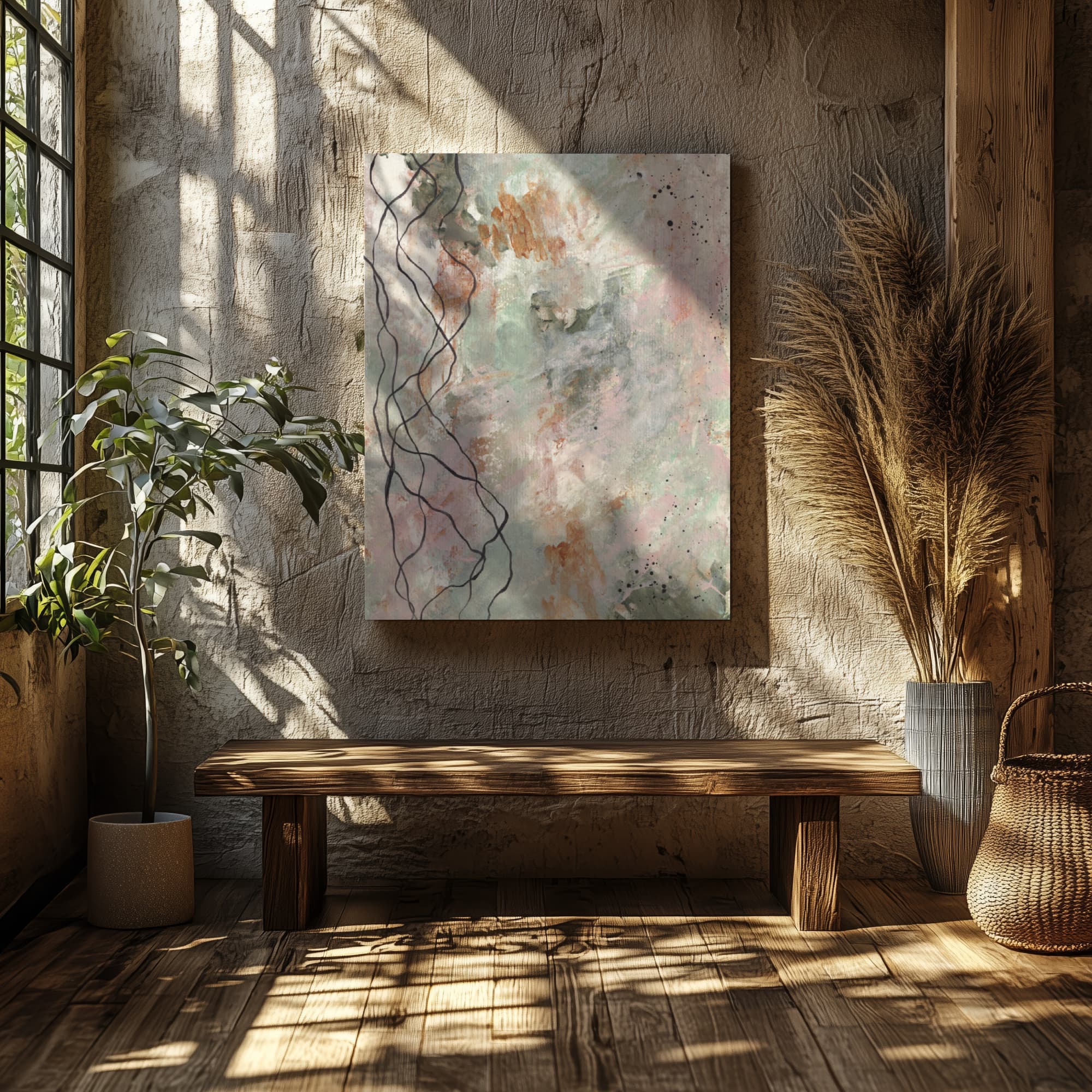
Zen and Minimalism: Not Emptiness, but Intention
When people hear “Zen”, they picture emptiness, white walls, bare floors, rooms so clean they barely feel lived in. But Zen, at its core, is about intention. Every object in a Zen space carries meaning. Nothing is there by accident.
Minimalism has a similar philosophy. It asks what truly matters, what deserves to stay, what gives you clarity instead of noise. But minimalism in the West has often been hijacked by lifestyle branding: stark, hollow interiors that are impressive for five minutes but unlivable for five months.
The fusion of Zen and minimalism isn’t about creating a void. It’s about stripping away distraction until you can actually breathe. It’s about removing excess, so the few things you keep can hold more weight. And that’s where art belongs.
Abstract art inside a Zen-minimalist space becomes a presence. Not an accessory, not a decoration, but an anchor. It holds the silence without leaving it empty. It creates balance between clarity and warmth. Without it, the room risks sliding into lifelessness. With it, the room feels like it can finally exhale.
Abstract Art as the Breath Inside the Room
Think of a Zen room as a body. Minimalism provides the bones: structure, clarity, support. Zen gives it the nervous system: intention, awareness, balance. But without breath, without circulation, the body is lifeless. That breath is art.
Abstract art doesn’t impose a story on you. It doesn’t crowd you with meaning. It leaves space, a visual openness that lets you project your own state of mind into it. And because it is nonliteral, it becomes a mirror. You see yourself in it. Your emotions settle against its shapes and colours.
In a room where every object is stripped to essentials, abstract art becomes the one living pulse. A brushstroke full of texture. A wash of colour that shifts with the light. A form that is ambiguous enough to invite reflection but grounded enough to hold presence. It’s the breath that animates the entire space.
This is why people walk into a Zen room with art and feel calm but not empty. They feel held. The room doesn’t swallow them. It meets them.
Colour, Form, and Texture as Emotional Architecture
Colour psychology is often oversimplified into clichés: blue is calming, red is energising, green is natural. But in healing environments, colour is not just visual, it’s physiological. The nervous system responds to subtle shifts in hue and tone.
In a Zen room, you’re aiming for regulation, not stimulation. Muted palettes with depth, soft greys, earthy taupes, misty blues, pale greens, allow the body to slow down. These tones reflect nature: water, stone, sky, soil. They tell the nervous system, “you are safe.”
Form matters just as much. Hard edges, sharp diagonals, and overly aggressive shapes can trigger tension. Organic curves, fluid lines, or layered abstractions invite softness. They move like breath.
Texture is often overlooked in minimalist design, where flatness is prized. But texture is where the body responds. Visible brushstrokes, layered surfaces, the grain of canvas or linen, these imperfections create touch without touch. They remind you that life is not smooth and sterile, but alive and irregular.
Abstract art brings all three, colour, form, and texture, into a minimalist Zen space not as decoration, but as emotional architecture. The room itself becomes more than physical. It becomes an environment that regulates your state.
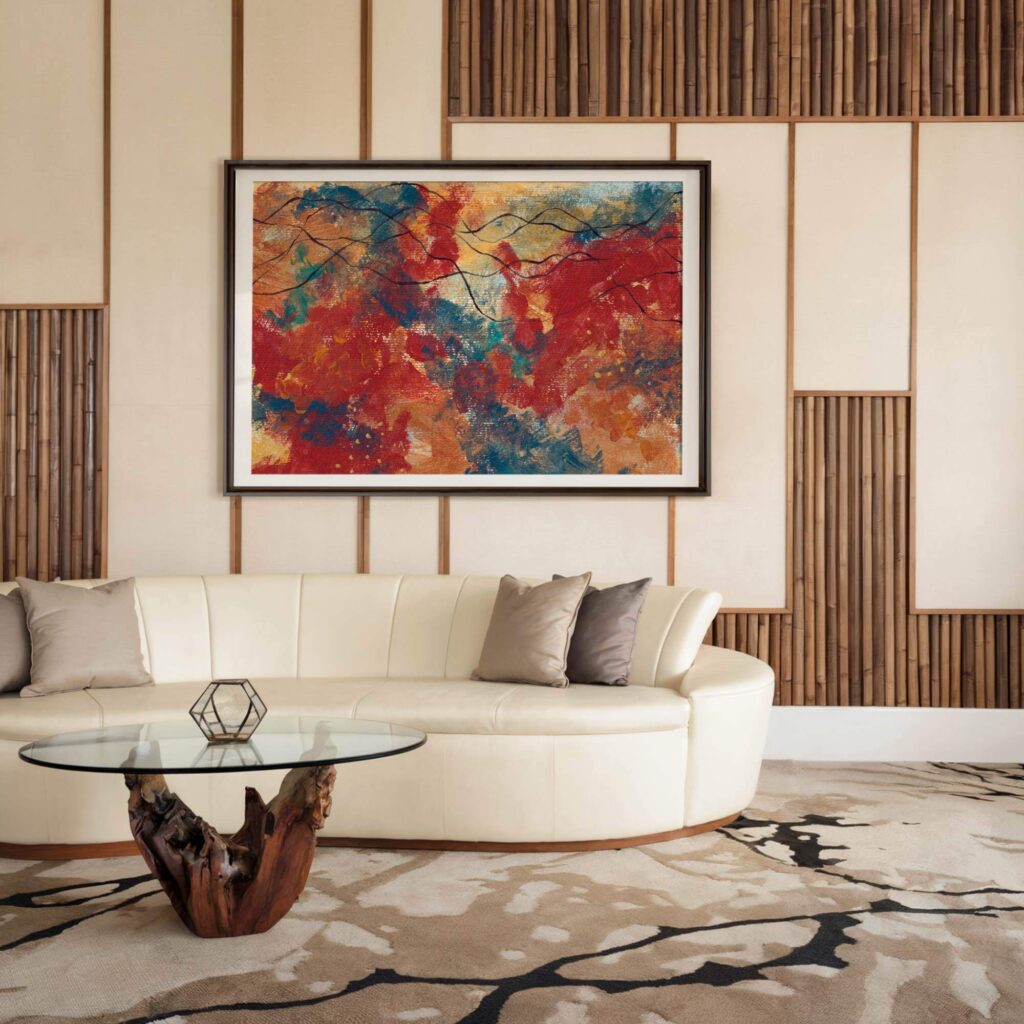
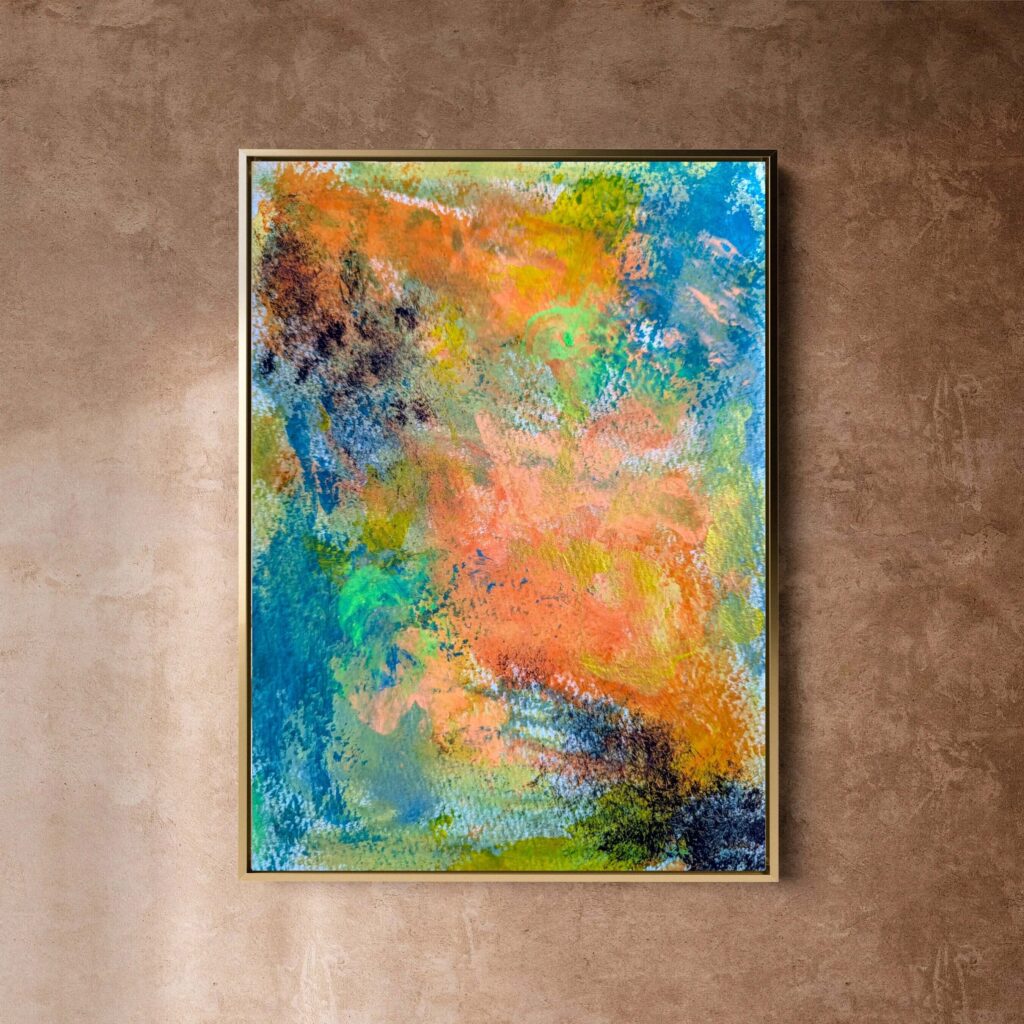
Placement: How Art Holds Space in the Room
Where you place art isn’t an afterthought. It changes how the room feels, how your body responds, and whether the space actually holds you or just looks curated.
Think about sitting down in your practice corner. The last thing you want is a blank wall staring back at you. A piece placed at eye level while you’re seated becomes a quiet anchor. You’re not forcing yourself back into the breath, your eyes rest there, and the art does the pulling for you. It becomes part of the practice.
Bedrooms are another story. These are the spaces where you either surrender or fight yourself. A soft piece placed where your eyes land before sleep, or when you first wake, sets the emotional tone for the night and the day. It tells your nervous system: here, you can let go.
Living rooms carry a different kind of energy. They need something bolder, something steady enough to ground the space without filling it with noise. One strong piece will always carry more weight than walls scattered with smaller works. It holds the energy instead of fragmenting it.
And then there are workspaces. These rooms carry a kind of static hum, screens, deadlines, everything pushing your attention outward. A calm, tonal piece placed in your line of sight is a reminder to pause. It doesn’t interrupt. It doesn’t demand. It just sits there, steady, until you remember to return to yourself.
The Trap of Mistaking Zen for Emptiness
Here’s the mistake almost everyone makes: they confuse Zen with emptiness. They strip their space down to nothing, bare walls, cold furniture, hollow silence, and then wonder why it doesn’t feel peaceful. Of course it doesn’t. Emptiness isn’t peace. Emptiness is absence.
Zen is not about having nothing. It’s about having what matters. Every choice is intentional. Every object carries weight. The silence is alive, not vacant.
This is why art is so essential in a Zen room. It’s the thread that keeps the silence from collapsing in on itself. Without it, the room risks becoming sterile, like a waiting room nobody wants to sit in. With it, the room becomes a sanctuary. The negative space has a counterbalance. The quiet has a pulse.
A single canvas, carefully chosen, can hold more presence than a dozen scattered objects. It doesn’t crowd the silence. It gives it meaning.
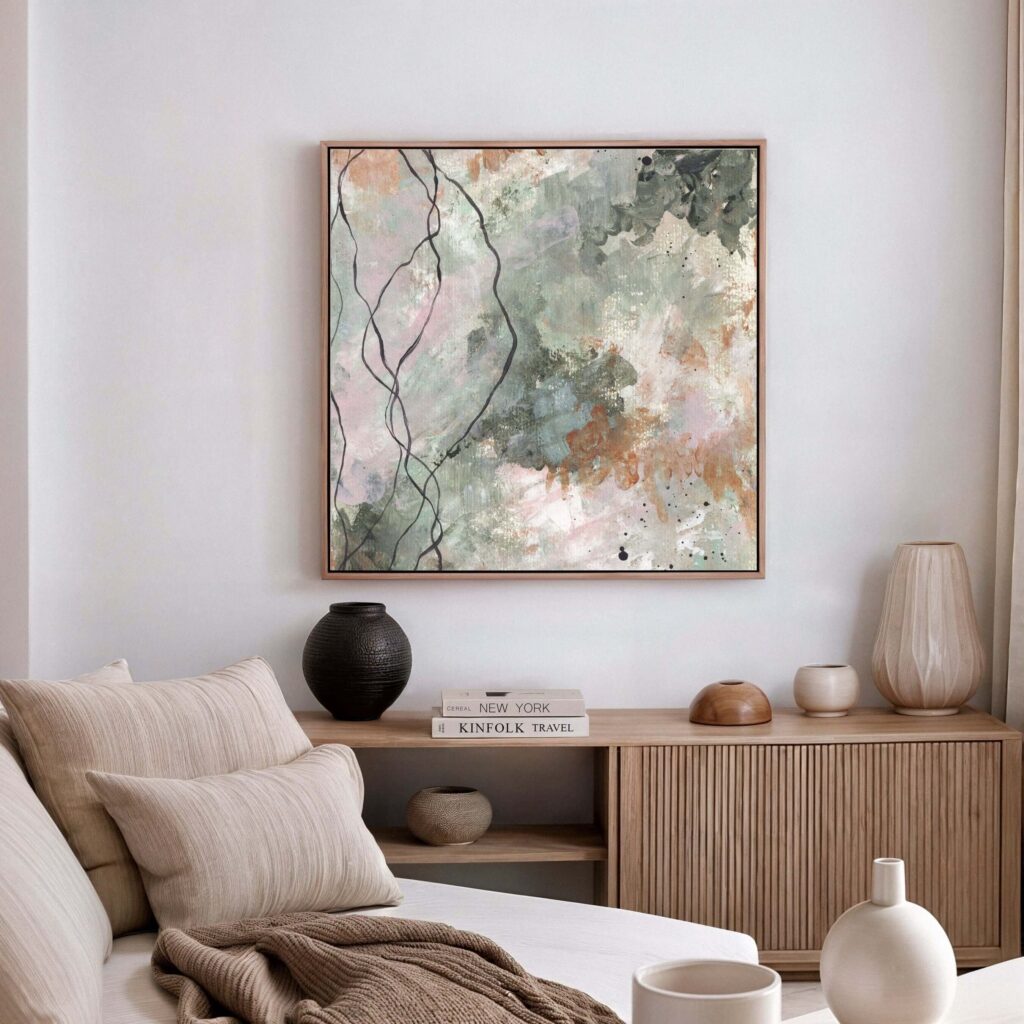
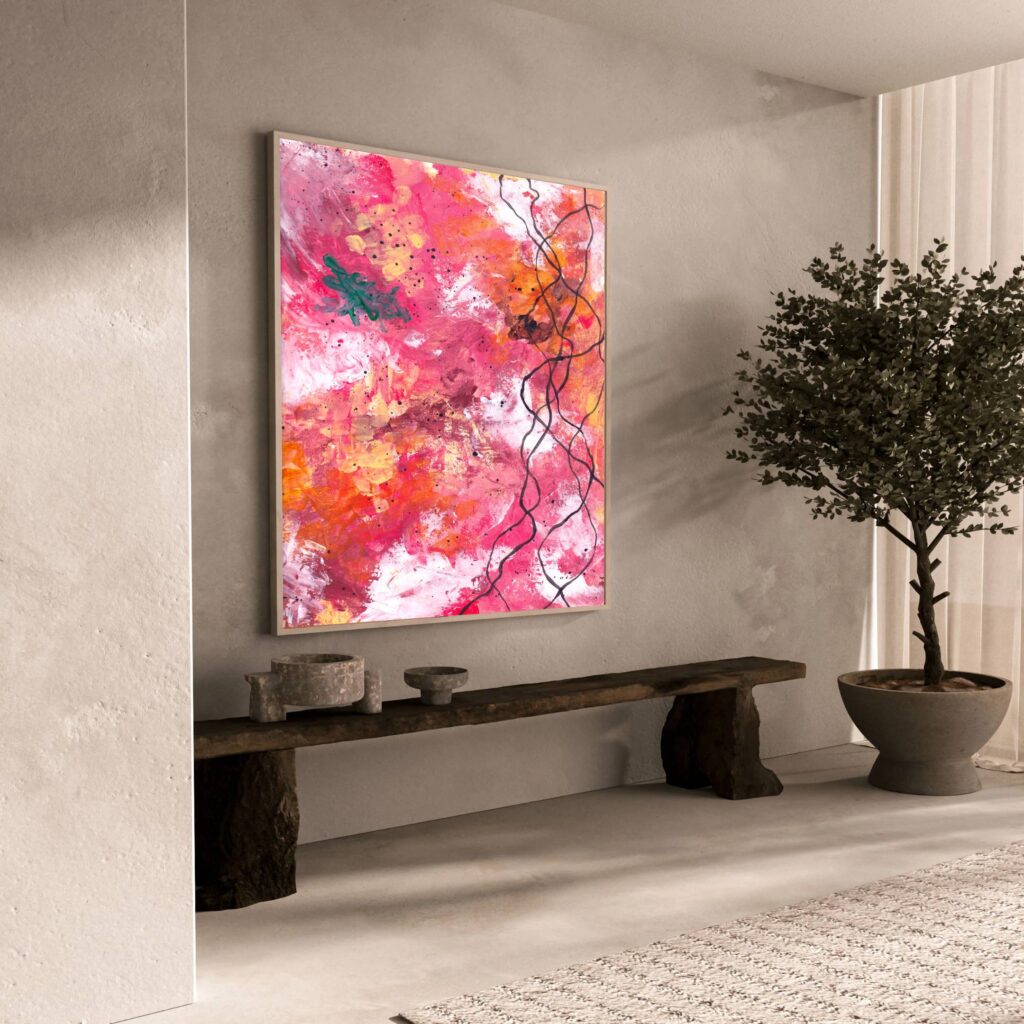
Living With Art: Mindfulness in Practice
Mindfulness isn’t a special occasion. It’s not just the twenty minutes you sit on a cushion trying not to think about your inbox. It’s how you move through the day, moment by moment. And art, when it’s chosen with presence, is one of the simplest ways to keep that practice alive.
You don’t have to stand in front of a painting for an hour to feel its effect. Sometimes it’s just a glance in passing. You walk into a room, your eyes catch the surface of the canvas, and something in you exhales before you’ve even noticed. Those micro-moments are where mindfulness actually lives.
Over time, the artwork stops being “something on the wall” and becomes part of your nervous system. It regulates you. It catches you in spirals and gently pulls you back. It reminds you that presence isn’t a chore, it’s already here, if you’re willing to see it.
This is what living with art does that meditation apps can’t. It’s not asking you to schedule more time. It’s woven into your everyday space, quietly doing its work every time you let your eyes rest on it.
The Future of Zen Design and Abstract Art
We’re at a turning point in how we think about space. For decades, interiors have been driven by surface, colour palettes, seasonal trends, and furniture brands. But that model is cracking. People are tired of living in houses that photograph well and feel hollow. They’re looking for spaces that keep them sane, not just stylish.
The future of Zen design is less about appearances and more about nervous system intelligence. Homes will be built around how people feel in them, not just how they look. Offices will have to acknowledge that burnout doesn’t start with workload, it starts with environments that grind people down. Retreats will lean even more on abstract art and minimalist balance, because no one wants to heal in a space that feels like a brochure.
Abstract art is already becoming central to this shift. It holds presence without dictating meaning. It allows for depth without clutter. It can travel across cultures, across uses, because it doesn’t tell you one fixed story. It leaves space for you to enter with your own.
We’re moving into an era where stillness isn’t seen as a luxury, but as a weapon against a culture that never stops. The spaces we design will reflect that, and abstract art will be one of the strongest tools to make it possible.
If you’re building a mindful office or healing environment, this is exactly what Capsule Commission was created for: one canvas, made privately through reflection, designed to hold stillness in a space that needs it most.
Personal Rituals in a Zen Room
A Zen room doesn’t work just because of how it looks. It works because of how you use it. The art and design give you the framework, but the rituals you build into it are what make the space alive.
It doesn’t need to be elaborate. It might be as simple as sitting in front of a painting for two minutes in the morning, letting your breath catch the rhythm of its lines. It could be closing the laptop at night, turning the light toward the canvas, and letting that mark the end of your workday. It might be lighting a candle near the piece that grounds you most, not as decoration but as a quiet conversation with yourself.
These rituals stitch art into your daily life. They stop the room from becoming background, from blending into the everyday noise. The space itself becomes part of your practice. It carries you without effort, reminding you to pause, to breathe, to notice.
Minimalist design clears the way. Zen brings intention. Abstract art provides the anchor. But it’s your rituals that make the room your own, not just a sanctuary in theory, but a living, breathing presence you can return to, day after day.
For private collectors who want to create that kind of ritual in their own space, the Collector’s Vault is where my canvas prints live, not as décor, but as anchors that transform a room into a sanctuary.
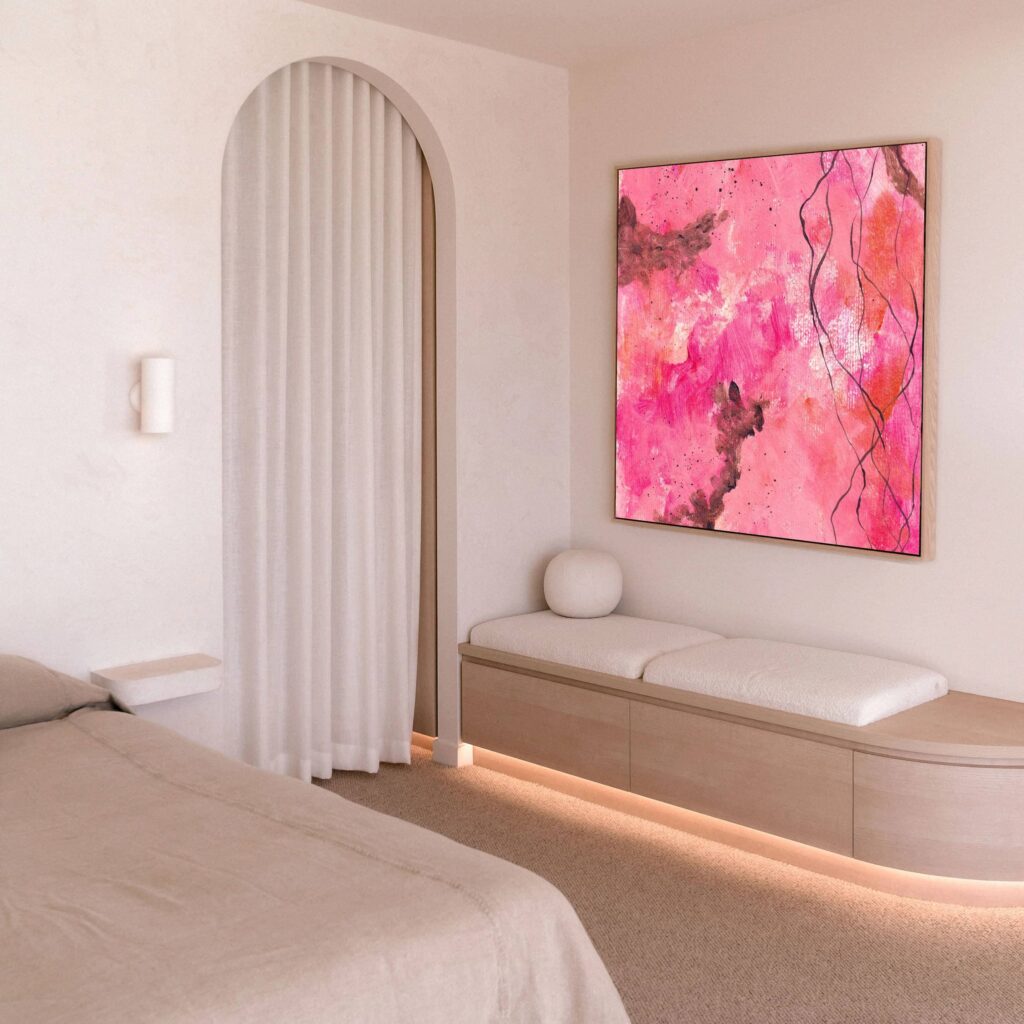
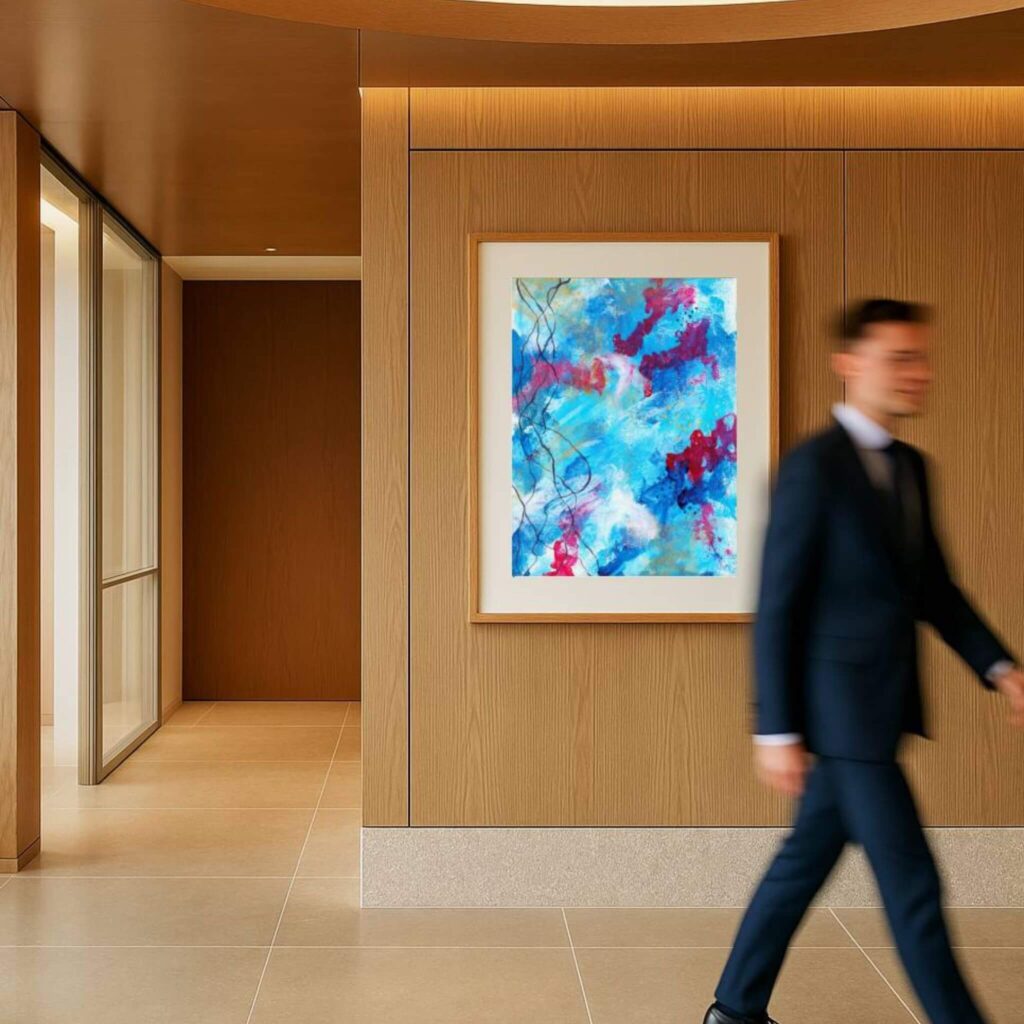
Final Thoughts: Sanctuary Over Style
A Zen room fused with abstract art isn’t about following rules or curating a perfect Instagram grid. It’s about building a space that actually holds you. Minimalism clears the noise. Zen brings intention. Abstract art brings the breath.
Together, they create more than a room. They create sanctuary.
Your Zen room doesn’t need to impress anyone. It doesn’t need to be flawless. It needs to feel like a place where you can finally put the armour down.
And art, chosen not for how it matches the sofa, but for how it resonates in your body, is what makes that possible.
